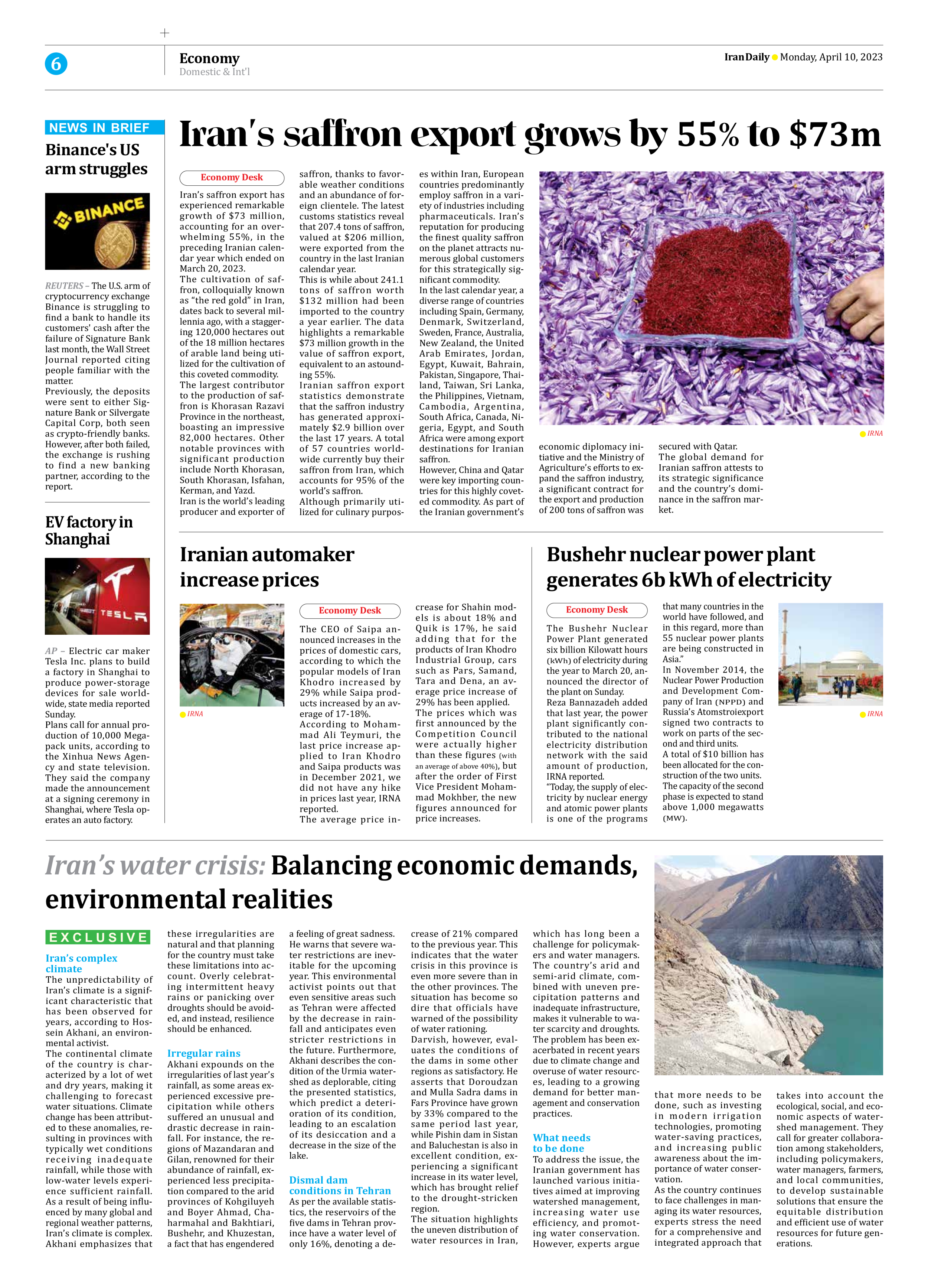
Iran’s water crisis: Balancing economic demands, environmental realities
Iran’s complex
climate
The unpredictability of Iran’s climate is a significant characteristic that has been observed for years, according to Hossein Akhani, an environmental activist.
The continental climate of the country is characterized by a lot of wet and dry years, making it challenging to forecast water situations. Climate change has been attributed to these anomalies, resulting in provinces with typically wet conditions receiving inadequate rainfall, while those with low-water levels experience sufficient rainfall. As a result of being influenced by many global and regional weather patterns, Iran’s climate is complex. Akhani emphasizes that these irregularities are natural and that planning for the country must take these limitations into account. Overly celebrating intermittent heavy rains or panicking over droughts should be avoided, and instead, resilience should be enhanced.
Irregular rains
Akhani expounds on the irregularities of last year’s rainfall, as some areas experienced excessive precipitation while others suffered an unusual and drastic decrease in rainfall. For instance, the regions of Mazandaran and Gilan, renowned for their abundance of rainfall, experienced less precipitation compared to the arid provinces of Kohgiluyeh and Boyer Ahmad, Chaharmahal and Bakhtiari, Bushehr, and Khuzestan, a fact that has engendered a feeling of great sadness.
He warns that severe water restrictions are inevitable for the upcoming year. This environmental activist points out that even sensitive areas such as Tehran were affected by the decrease in rainfall and anticipates even stricter restrictions in the future. Furthermore, Akhani describes the condition of the Urmia watershed as deplorable, citing the presented statistics, which predict a deterioration of its condition, leading to an escalation of its desiccation and a decrease in the size of the lake.
Dismal dam
conditions in Tehran
As per the available statistics, the reservoirs of the five dams in Tehran province have a water level of only 16%, denoting a decrease of 21% compared to the previous year. This indicates that the water crisis in this province is even more severe than in the other provinces. The situation has become so dire that officials have warned of the possibility of water rationing.
Darvish, however, evaluates the conditions of the dams in some other regions as satisfactory. He asserts that Doroudzan and Mulla Sadra dams in Fars Province have grown by 33% compared to the same period last year, while Pishin dam in Sistan and Baluchestan is also in excellent condition, experiencing a significant increase in its water level, which has brought relief to the drought-stricken region.
The situation highlights the uneven distribution of water resources in Iran, which has long been a challenge for policymakers and water managers. The country’s arid and semi-arid climate, combined with uneven precipitation patterns and inadequate infrastructure, makes it vulnerable to water scarcity and droughts. The problem has been exacerbated in recent years due to climate change and overuse of water resources, leading to a growing demand for better management and conservation practices.
What needs
to be done
To address the issue, the Iranian government has launched various initiatives aimed at improving watershed management, increasing water use efficiency, and promoting water conservation. However, experts argue that more needs to be done, such as investing in modern irrigation technologies, promoting water-saving practices, and increasing public awareness about the importance of water conservation.
As the country continues to face challenges in managing its water resources, experts stress the need for a comprehensive and integrated approach that takes into account the ecological, social, and economic aspects of watershed management. They call for greater collaboration among stakeholders, including policymakers, water managers, farmers, and local communities, to develop sustainable solutions that ensure the equitable distribution and efficient use of water resources for future generations.







